How Long Does Meth Withdrawal Last?
The decision to stop using drugs like methamphetamine takes a lot of courage if not for any other reason than the addiction sufferer knows they will have to deal with withdrawal symptoms. Yes, that’s a necessary part of the battle against addiction, but it’s a very scary part of the battle. More than a few addiction sufferers have aborted attempts to stop using meth simply because they couldn’t bear dealing with withdrawal symptoms.
We don’t tell you this to scare you. We just feel it’s better for you to know upfront that with which you will be dealing. That might serve to motivate you to get help with the detox process instead of trying to go it alone.
If we are going to inform you, we feel compelled to lay out the meth detox timeline. Of course, things might vary a bit based on these factors:
- The time you have invested abusing meth
- The actual depth of your meth addiction
- the amount of meth you are using each time
- The frequency of the meth abuse
- The possible existence of underlying reasons for the meth abuse
Based on these factors, you can almost predict how long it would take to detox off meth without any support or assistance. However, we don’t know about the circumstances surrounding your meth addiction. Since we still want to offer you some relevant information, we are going to take you through the meth withdrawal timeline at the most basic level.
Based on this information, you should be able to estimate what you would be facing when you decide to say “no more” meth.
The Meth Withdrawal Timeline
After someone makes the decision to stop using meth, they have about 12 hours before they start feeling the effects of their decision. Initially, they might start feeling a little nervous and agitated.
By the end of the first day, the cravings will start screaming. The agitation will start becoming more noticeable and physical withdrawal symptoms like sweating will kick in.
Heading into days two and three, the worst of the physical symptoms will start. This includes issues with breathing, high blood pressure, an elevated heart rate, nausea, vomiting, and some cramping. By the end of the third day, hallucinations and convulsions might become a problem. This is the point on the timeline when people start second-guessing their decision to stop using meth.
Over days four through seven, there is a lot of disorientation, confusion, and sleeping issues. This is also the point when depression and anxiety become issues. They become issues because the individual is starting to sober up and all they have left are the horrible feelings that drove them to use drugs in the first place.
Once the individual gets through the first week, they should start feeling a bit better. While the worst symptoms are pretty much in the past, there is still a bit of a mountain to climb. The individual might start sleeping better out of pure exhaustion. It’s important for the individual to aid in the recovery process by eating nutritious food and getting a little exercise.
By the end of the second week, the individual should feel much better physically, However, there could still be lingering issues with depression and anxiety as the old cravings reappear every now and then. The biggest threat at this point is the possibility of post-acute withdrawal syndrome (PAWS). These could continue for several months, so please be aware.
As you can see, there is a lot going on when you start dealing with withdrawal symptoms. That’s exactly why you would be well advised to get help with the detox process. By getting yourself into a medically monitored detox program, you can ensure that you will be safe and secure until the worst of the symptoms have passed. It’s at this point that you will start to feel strong enough to get therapy. With the right kind of therapy, you would have a real chance of recovering from your meth addiction.
We encourage you to not let the possibility of harsh meth withdrawal symptoms keep you from getting the help you need. When you are ready, we will be here to help you every step along the path to recovery. That includes helping you through the detox process. All we need is an initial phone call to 424-499-2603. During that conversation, one of our representatives will be happy to tell you about our facility and treatment services.
We offer more than a recovery program, offer an experience.
© 2021 California Centers for Recovery. All Rights Reserved.
